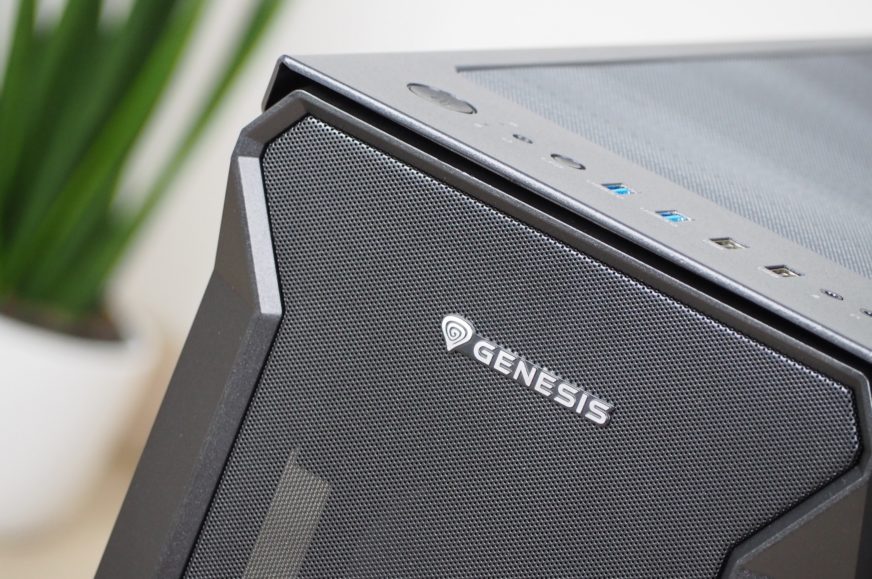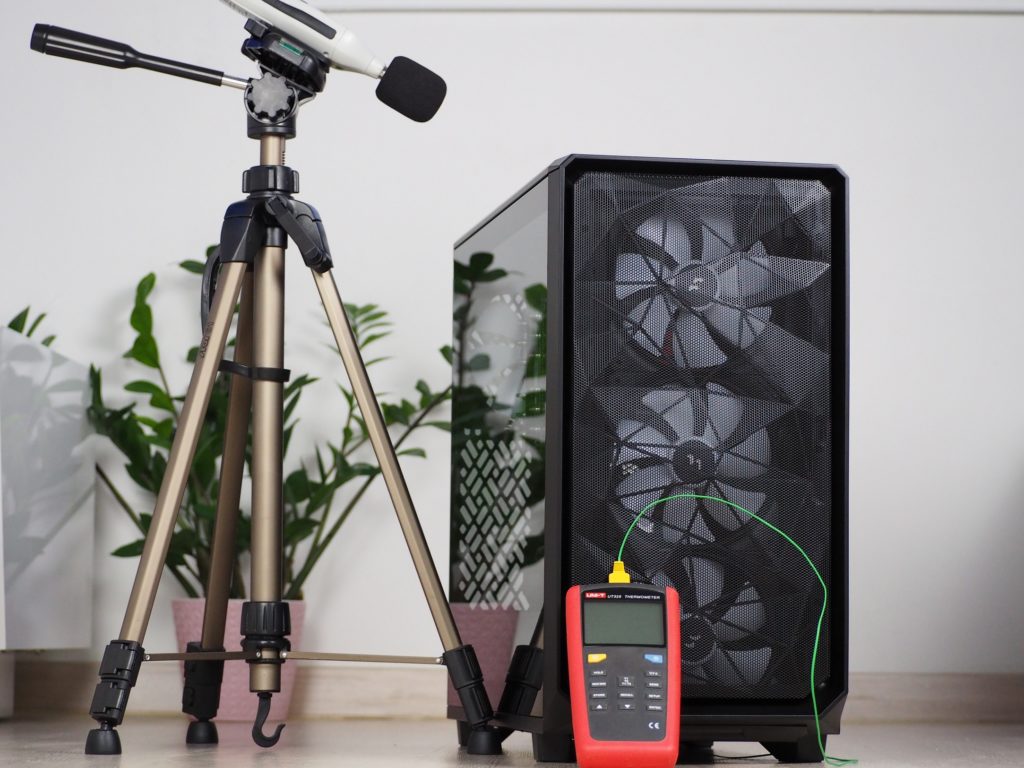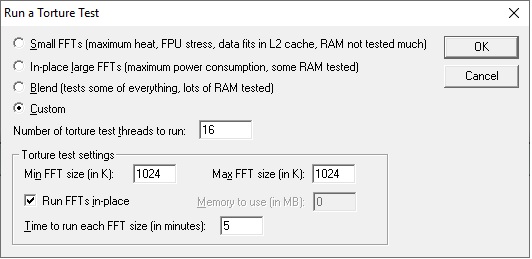Test methodology
Among new cases, the Polish company Genesis is also making a statement by upgrading the older Irid 503 and Irid 505 cases. One of these new models, which we will now focus on in our tests, is the Irid 505F. This one is remarkable in that it comes with as much as five fans, which is quite unusual. Especially in the class of cheaper cases to which the Irid 505F belongs.
Test methodology
Rarely do you get five fans in a case from the factory, and that’s where the Irid 505F has a definite advantage. Especially when two of them are mounted in the exhaust positions. Genesis recommends setting the fans up to 80 % power for the ideal cooling-to-noise ratio, but this was already above the tested noise limits. A noise meter 10 cm away from the case measured its value at 43.9 dBA. With a perforated front panel and two fans exhausting warm air, the Irid 505F is certainly not to be trifled with.
Testing is done in a home environment where I strive for the most accurate results possible. In the room during testing, the air temperature in front of the case is 23 degrees Celsius and the minimum noise level I can measure with the Voltcraft SL-100 noise meter is 32.4 dBA. The sensor of the noise meter is aligned to the center of the top of the case at a distance of 10 cm, for the best measurement of the speed difference of the fans, which I change using the motherboard. For easy comparison to other cases, they are always regulated to fixed noise levels.
Individual components are heated for 10 minutes in FurMark synthetic stress tests and with Prime95 (custom settings) at the same time. This time is long enough to allow all components to warm up sufficiently. There are then 15-minute cooling breaks between tests, during which the component temperatures (and the case air temperature as well) are brought back to default.
Noise mode levels:
- 36 dBA
- 38 dBA
- 39 dBA
| Testovacia konfigurácia | |
| Procesor | AMD Ryzen 7 3700X |
| Základná doska | ASRock X570 Taichi |
| Chladič procesora | Scythe Fuma rev. 2 (single fan) |
| Teplovodivá pasta | Noctua NT-H2 |
| Grafická karta | Asus RTX 2060 Super Dual |
| RAM | Patriot, 2× 8GB, 3600 MHz/CL17 |
| SSD | Western Digital Blue 500GB (2280) |
| Napájací zdroj | Corsair RM750X |
- Contents
- Exterior
- Interior
- Test methodology
- CPU and GPU cooling tests
- Motherboard cooling tests
- SSD cooling tests and under-ceiling temperature
- Conclusion











Would you recommend this case over Modecom Volcano Amirani?
I can see that during the tests Genesis is doing very well with keeping the temperatures down. Putting that aside are there any major quality or feature differences?
Amirani has its advantages such as backlighting with remote control or the ability to mount the graphics card vertically. It also has thicker sheet metal and Velcro strips for cable management, which the tested Irid didn’t have. But if I compare the two cases as a whole and add in their cooling performance, I would personally prefer the Irid 505F over the Amirani. You need to consider what you expect from the case and decide accordingly.
I think it is often overlooked, but Amirani also has USB Type C port on top, which is very handy when using external SSD with such connector.
That’s why I wrote that you need to determine what you want from the case. Of course USB type C is another plus for Amirani. The Irid, on the other hand, has a higher number of connectors (4× USB type A). There is about a 20 euro difference in price between the cases, which is also reflected in their features and quality.
We can apply the same procedure for the Amirani case and with an increased budget by 20 euros, we can buy, for example, the Lian Li Lancool II Mesh Performance.